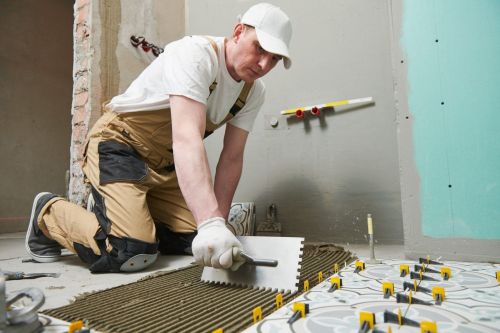
Mold and mildew are fungi, which are microscopic organisms that can thrive in any moist environment. Molds are important. They break down dead organic matter and help regenerate soil. This does wonderful things outdoors, but if it is indoors, mold is not a good thing. Mold happens, and it’s almost never the end of the world. Mildew on the other hand, is a mold in the early stages.
Mold creates spores, which are airborne and can land any organic surfaces close to the original source. Mildew is less harmful than mold, but can still cause some health issues, but it’s easier to deal with as compared to mold.
If one is sensitive to molds, they might experience sneezing, coughing, or shortness of breath, but are unlikely to suffer any serious side effects. For people with compromised immune systems, it can be even harder to bear. Mildew can produce less severe instances of these symptoms, but a little bit of mildew in the shower is more of an aesthetic problem than a health threat.
Mold will also ruin the surface it settles upon, eventually, unless it is dealt with ASAP. Mildew, is common in damp environments and just needs to be managed. Once it forms, it can be cleaned and treated to prevent re-growth.
How to clean Mold & Mildew
If you already have a mold issue in your home, don’t panic. We recommend that you call a professional to do this. This job needs specialty protective gear, products, they know how to check mold spores in the air and know exactly how to eliminate the entire problem and not just what your eye can see.
If you have mildew in the house, there are several ways to clean it. Although bleach is known to get rid of mold & mildew, it does not kill mold on porous surfaces and can actually contribute to the mold’s growth. Bleach also loses potency over time, so there is no guarantee of its effectiveness. There are other alternatives which work:
- Vinegar – apply undiluted vinegar on the affected surface and leave it for 30mins. Scrub vigorously with a brush. Rinse and dry and re-spray with the vinegar and let it dry.
- NOTE: be sure that the surface you are cleaning can tolerate vinegar. DO NOT USE this on natural stone and other sensitive surfaces.
- Hydrogen peroxide – Mix with water with a 1:1 ratio. Apply on the affected area, leave it for 10 mins and then scrub with a brush. Rinse, dry and respray with the mixture and allow it to air dry.
- Use a specialty product.
Reminder: clean your cleaning tools after dealing with your mildew problem to ensure that there is no mildew left behind.
Tips to prevent Mold & Mildew
Prevention is better than cure. If your shower is still mold & mildew free or you just got rid of an infestation, here are some tips to prevent mold & mildew.
- Use the exhaust fan in your bathroom. This helps eliminate excess moisture from your bathroom, especially after taking a shower. Leave it on during and after showers for an hour. If you don’t have an exhaust fan, leave the door and a window open.
- Clean your shower curtain on a regular basis. This helps reduce the soap residue in the shower. Mildew feeds on soap residue.
- If you have storage baskets in your bathroom, use the kind with holes in them to allow air to pass through. Moisture will not build up in those areas.
- Completely dry out towels and sponges.
- Use a squeegee after you have a shower or towel dry the tiles. This is the best way to eliminate the moisture in areas where water can puddle and attract mildew.
- Clear your shower area clear from bottles. Water tends to collect around bottles.
- Mix 1tsp of tea tree oil to a cup of water and use that as a daily shower spray on your shower walls.
Mold thrives in moisture, so controlling the moisture is tantamount to controlling the mold. Mold will not grow if moisture isn’t present.

